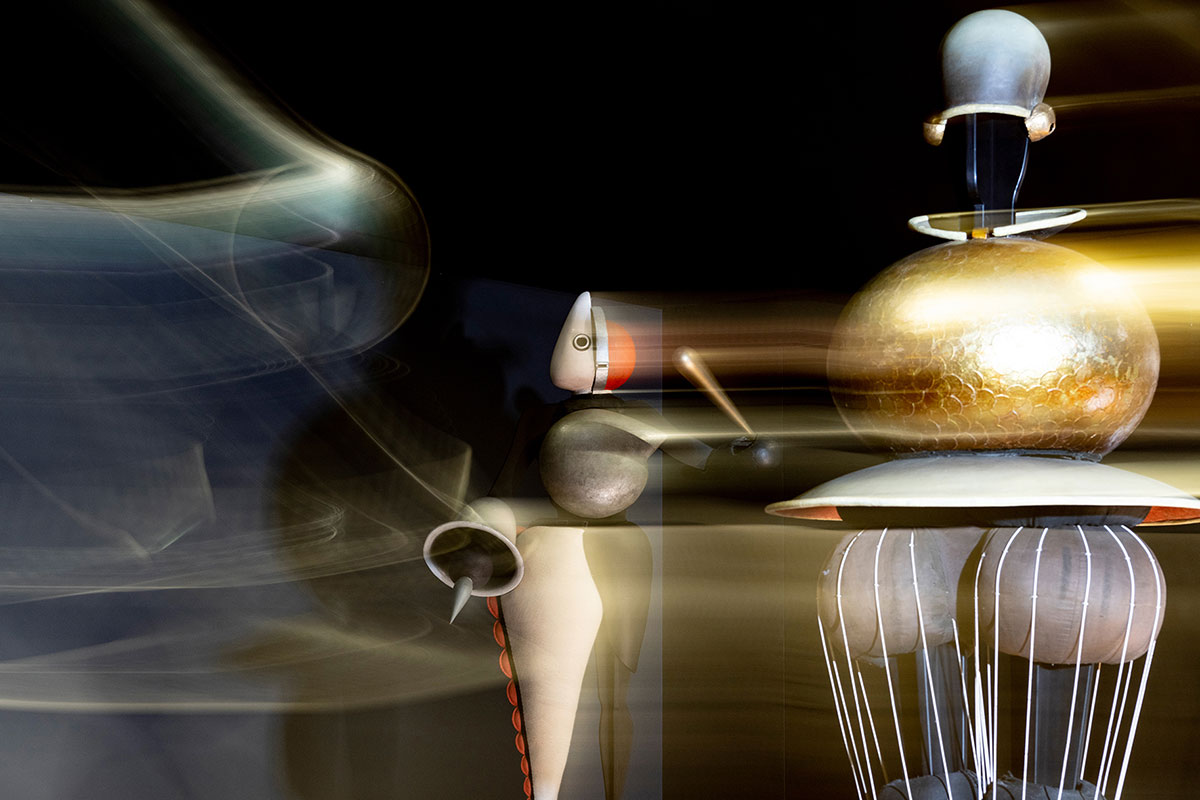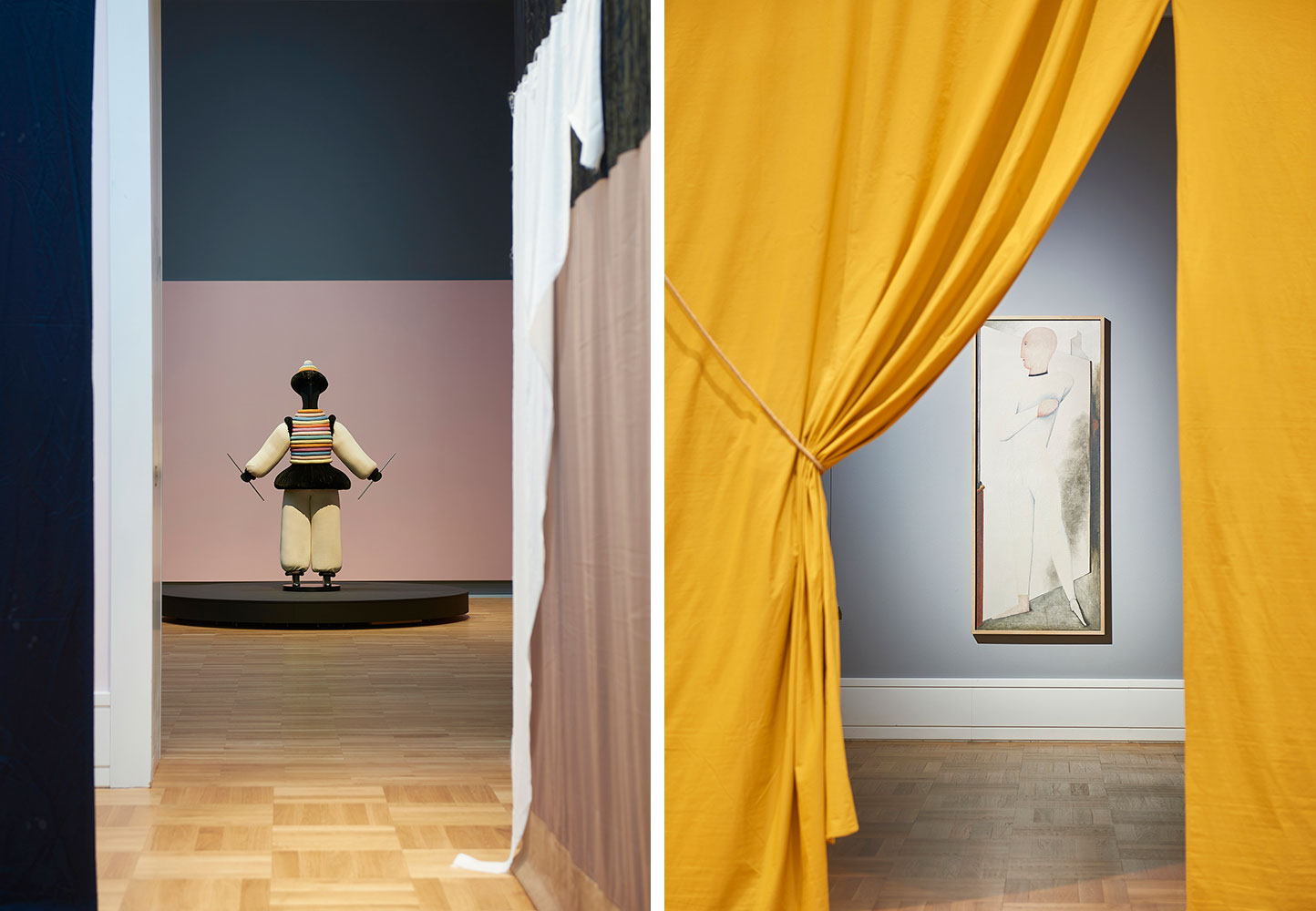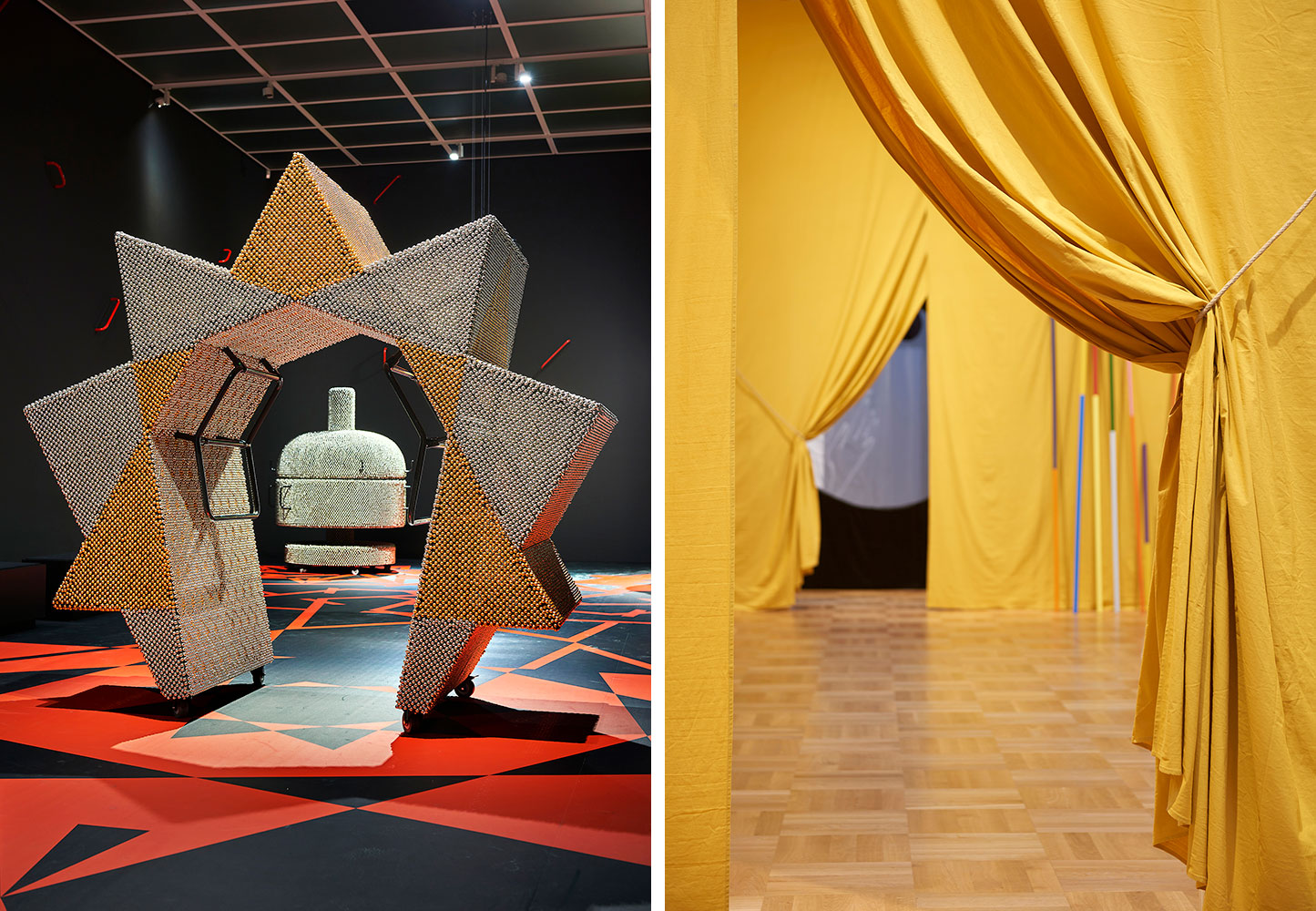PRESENTATION: Moved by Schlemmer
 Oskar Schlemmer’s work in performance was both experimental and subversive. He purposely broke free from the usual constraints and rules of theater and dance, creating completely new versions of the artforms. He was one of the first artists to modernize the genres and his work formed the basis for many modern performance ideas that followed. He also explored painting and sculpture, winning international acclaim for his work.
Oskar Schlemmer’s work in performance was both experimental and subversive. He purposely broke free from the usual constraints and rules of theater and dance, creating completely new versions of the artforms. He was one of the first artists to modernize the genres and his work formed the basis for many modern performance ideas that followed. He also explored painting and sculpture, winning international acclaim for his work.
By Dimitris Lempesis
Photo: Staatsgalerie Stuttgart Archive
During the 1920s, Oskar Schlemmer was one of the Masters at the progressive Bauhaus school, working and teaching across a range of mediums. The Bauhaus revolutionized the way in which art was taught and created and Schlemmer is seen as a key figure in shaping its forward-thinking and collaborative ethos. His Triadic Ballet premiered in Stuttgart on 30/9/1922. Almost a century later, this total work of art, which brings together visual art, dance and costume design, has lost none of its fascination. Schlemmer’s surviving original figurines, which have been in the possession of the Staatsgalerie since the 1970s, are among the highlights of the collection. The exhibition “Moved by Schlemmer. 100 Years Triadic Ballet” integrates the historical figurines in a presentation of large-scale installations. The exhibition is a room-filling installations by the three contemporary artists Ulla von Brandenburg, Kalin Lindena and Haegue Yang. The starting point of the exhibition is Schlemmer’s concept of the triadic ballet as a dance of the trinity, which increases in three moods from the cheerful-burlesque to the festively solemn to the mystical-fantastic. Ulla von Brandenburg, Kalin Lindena and Haegue Yang each react to a mood and confront Schlemmer’s reflections with their own artistic questions. Oskar Schlemmer’s Triadic Ballet premiered at the Stuttgart Landestheater with music by the German composer Paul Hindemith. The production went on to tour throughout Europe in the 1920s spreading the Bauhaus ideas of modern art. The ballet didn’t have a plot, but rather three acts of different moods and color. Act One was yellow, Act Two, pink, and the final Act was black. It was performed by three dancers, two female and one male, who wore a total of 18 costumes. The costumes over-emphasized the forms of the human body, turning the dancers into geometrical constructions and they moved both with and against the wearers as they danced the ballet, restricting some movements and highlighting others. The mixed media of their construction variously reflected and absorbed light further emphasizing certain body parts and structural elements. Schlemmer was the first artist to fuse dance and modernism through his exploration of abstraction in real space. It also marked a breakaway from classical ballet’s focus on the soloist and the duet, instead emphasising a collective approach to dance. Schlemmer described his attempts to explore the relationship between body, shape, color and space as “artistic metaphysical mathematics”. A look at the history of reception also shows how strong the influence of the Triadic Ballet has remained to this day, but also what critical questions Schlemmer’s work provokes today a hundred years after its creation. Ulla von Brandenburg is a German artist born in 1974 in Karlsruhe and based in Paris since 2005. After training as a scenographer in Karlsruhe and a brief period spent in the world of the theatre, she studied at the Hochschule für Bildende Künste in Hamburg. Her work is characterised by a diversity of means and media (installations, films, watercolours, murals, collages, performances…) that answer to one another and which she stages according to different exhibition spaces. Perfectly mastering the codes of scenography, nourished by literature, the history of the arts and architecture but also psychoanalysis, spiritism and magic, she derives as much from esoteric rituals and popular ceremonies, as from the mechanisms and codes of the theatre, to explore the construction of our social structures. Masks, costumes, sets and props coming from different popular traditions thus allow her to transgress symbolically norms and hierarchies by subtly mingling reality and appearances in theatrical presentations. Kalin Lindena was born in Hanover in 1977 and studied under Walter Dahn in Braunschweig, takes on various painting surfaces such as paper, fabric and walls in order to cover them with a fine web of lines, surfaces, signs and words, personal references and cultural quotations to vary and mix with each other. Since her student days, her work has not only been characterized by different techniques and materials, she has realized her works in different media, from wall drawings and paintings to installations in space, integrating found objects such as windows, panes of glass or found forms that have been taken out of context and isolated .These apparently accidental and unintentionally staged collages seem like they came out of nowhere, but are anything but careless. Haegue Yang seeks to communicate without language in a primordial and visual way: often complementing her vocabulary of visual abstraction with sensory experiences that include scent, sound, light and tactility. Combining industrial fabrication and folk craftsmanship, Yang explores the affective power of materials in destabilizing the distinction between the modern and pre-modern. Yang’s unique visual language extends across various media (from paper collage to staged theatre pieces and performative sculptures), and materials (Venetian blinds, clothing racks, synthetic straw, bells and graph paper) that are torn, lacquered, woven, lit and hung. Her artistic explorations stem from material-based concerns, accompanied by philosophical, political and emotionally charged readings of historical events and figures. Her ongoing research is empowered by underlying references to art history, literature and political history, through which she re-interprets some of her recurrent themes: migration, postcolonial diasporas, enforced exile and social mobility. As a result, these pieces link various geopolitical contexts and histories in an attempt to understand and comment on our own time. Yang’s translation from the political and historical into the formal and abstract, demonstrates her conviction that historical narratives can be made comprehensible without being linguistically explanatory or didactic.
Photo: Oskar Schlemmer, The Triadic Ballet, 1922, Staatsgalerie Stuttgart, © Photo: Oliver Kröning
Info: Curator: Susanne Kaufmann-Valet, Staatsgalerie Stuttgart, Konrad-Adenauer-Strasse 30-32, Stuttgart, Germany, Duration: 10/4-9/10/2022, Days & Hours: Tue-Wed & Fri-Sun 10:00-17:00, Thu 10:00-20:00, www.staatsgalerie.de


Right: Oskar Schlemmer, The Dancer, 1923, Staatsgalerie Stuttgart / Ulla von Brandenburg, Masked and above all – discreet, 2022, detail, © Courtesy of the artist and Meyer Riegger; Produzentengalerie Hamburg; Galerie Art: Concept; Pilar Corrias, Photo: Staatsgalerie Stuttgart

Right: Ulla von Brandenburg, Masked and above all – discreet, 2022, detail, © Courtesy of the artist and Meyer Riegger; Produzentengalerie Hamburg; Galerie Art: Concept; Pilar Corrias, Photo: Staatsgalerie Stuttgart

